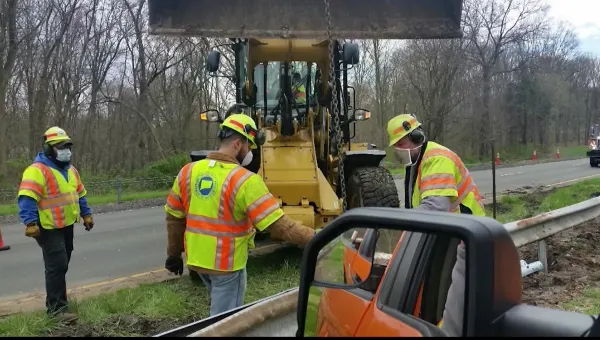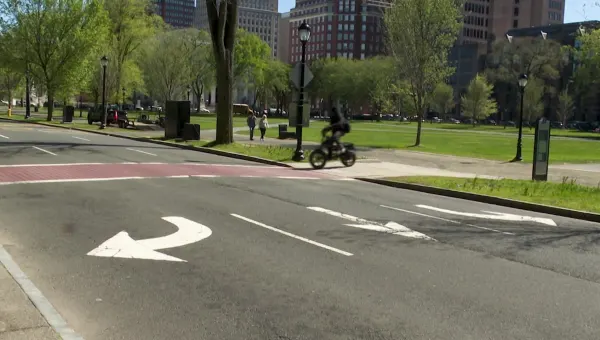Is it a golf cart? A car? ‘Low-speed vehicles’ may be coming to CT
“low-speed vehicles” may finally be legal on Connecticut streets this year – thanks to a bill at the state Capitol.
Share:
More Stories
1:50
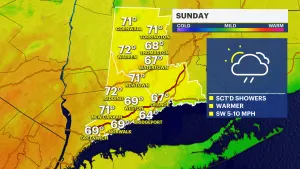
Scattered showers overnight for Connecticut; sun returns Sunday afternoon
1h ago0:27
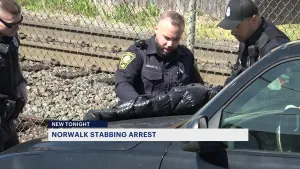
Police: Norwalk man arrested in connection to Main Street stabbing
1h ago1:43
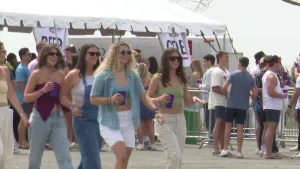
Hundreds of Fairfield University students celebrate annual springtime Clam Jam
1h ago1:59
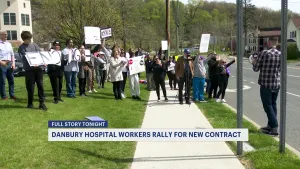
Danbury Hospital employees demand fair contract as rallies continue
4h ago0:26
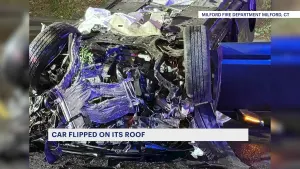
Milford FD: Person extricated from rollover crash
4h ago0:21

Stratford PD: Woman wanted on felony robbery warrant considered ‘armed and dangerous’
4h ago1:50

Scattered showers overnight for Connecticut; sun returns Sunday afternoon
1h ago0:27

Police: Norwalk man arrested in connection to Main Street stabbing
1h ago1:43

Hundreds of Fairfield University students celebrate annual springtime Clam Jam
1h ago1:59

Danbury Hospital employees demand fair contract as rallies continue
4h ago0:26

Milford FD: Person extricated from rollover crash
4h ago0:21

Stratford PD: Woman wanted on felony robbery warrant considered ‘armed and dangerous’
4h agoThey look like a cross between a golf cart and a small car. But whatever you call them, “low-speed vehicles” may finally be legal on Connecticut streets this year – thanks to a bill at the state Capitol.
WHAT IS AN LSV?
Along the Norwalk waterfront, Fior Lostumbo sells LSVs at Connecticut Custom Carts. He envisions a booming rental business for boaters who dock there and want to head into town for dinner.
His carts get a lot of curious looks.
“We have so many people asking about them,” he said.
Like a golf cart, most low-speed vehicles are open-air and top out at 26 m.p.h. But they also have many features of a car.
“It’s definitely not a golf cart,” said Lostumbo. “It has all the amenities and safety requirements that vehicles need to have – seat belts, turn signals, horn.”
Lostumbo said LSVs are an affordable alternative for people who don’t have the money – or space – for a traditional car.
“The cheapest ones you can pretty much get $5,000 to $15,000,” he said.
Plus, you can plug them into a standard wall outlet for a few hours and get about 40 miles of range.
STREET LEGAL?
Lostumbo took News 12 for a ride in a new low-speed vehicle, but it had to stay in the parking lot. That’s because Connecticut is one of only three states where LSVs are completely prohibited from public streets.
“It is a short-trip vehicle,” said J. Kevin Smith, a consultant working with Connecticut Custom Carts. “It’s a convenience vehicle to be able to get – run errands around the neighborhood, go visit friends.”
New legislation would finally allow LSVs, but only on roads with 25 mph or lower speed limits. Communities could also ban them.
To drive a low-speed vehicle, you would need a driver’s license, state registration and insurance – just like a car.
SAFETY CONCERNS
The Connecticut Department of Motor Vehicles and the Department of Transportation both oppose legalizing low-speed vehicles. They said LSVs offer little protection in a crash.
“Federal safety standards do require LSVs to have headlights, turn signals, and a windshield, but there are minimal safety measures for vehicle occupants when compared to other motor vehicles we see on our roadways today,” wrote DOT commissioner Garrett Eucalitto. “LSVs are not equipped with features to protect occupants during a crash; they have very little frontal impact protection and even less side impact protection for the driver and passengers.”
Last year, a newlywed in South Carolina was killed just hours after her wedding, when a drunk driver slammed into the low-speed vehicle she was riding in.
DMV commissioner Tony Guerrera told lawmakers LSVs still have too many safety questions.
“Do they meet crash protections in regards to other vehicles?” he said. “These are things that we have to make sure that are very clear before we start putting any kind of vehicle on our roadways.”
Lostumbo said low-speed Vehicles actually make roads safer – especially on the neighborhood streets where they would be permitted.
“They’re definitely traffic-calming,” he said. “They make the entire town run a little slower.”
Although 47 other states allow some form of low-speed vehicles, many impose restrictions on them. In Connecticut, the legislation now awaits action in the state House of Representatives
